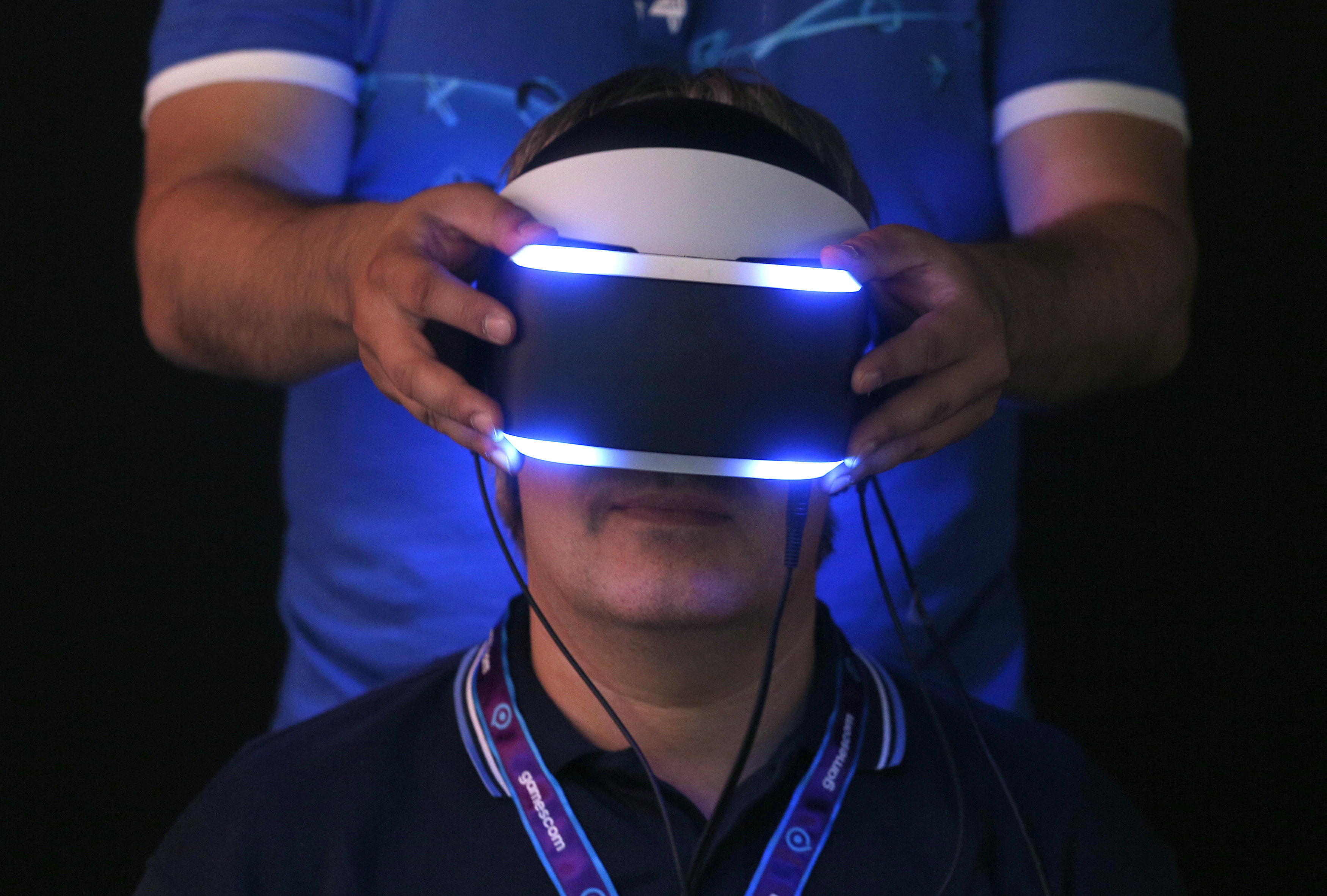Everything you need to know about the virtual reality boomlet
As virtual reality moves from the abstract to the actual, it's worth taking a timeout to ask a simple question: What exactly are we talking about?

2016 is already a big year for virtual reality, with VR technology making regular headlines for its almost comically varied feats: enhancing classroom instruction, enabling long-distance tours of New York City apartments, helping NASA researchers explore the surface of Mars, and providing front-row access to the swimsuit models of Sports Illustrated. And popular interest in virtual reality only stands to increase as the release date approaches for the Oculus Rift headset, the revolutionary piece of personal tech that has done the most to advance the VR dream.
But as virtual reality moves from the abstract to the actual, it's worth taking a timeout to ask a simple question: What exactly are we talking about? VR has come a long way in a short time, and much of the country still has to catch up. A survey of 2,282 Americans last year found that while 80 percent of participants reported some awareness of VR technology, only 10 percent indicated they know a lot about it.
For starters, it's important to distinguish virtual reality in its current form from sci-fi fantasies such as 1992's The Lawnmower Man, perhaps the most referenced piece of pop culture in VR conversations.
The Week
Escape your echo chamber. Get the facts behind the news, plus analysis from multiple perspectives.

Sign up for The Week's Free Newsletters
From our morning news briefing to a weekly Good News Newsletter, get the best of The Week delivered directly to your inbox.
From our morning news briefing to a weekly Good News Newsletter, get the best of The Week delivered directly to your inbox.
Essentially, virtual reality is technology that immerses users in a lifelike digital world. What you see fills your entire field of view, and tracks with your movements: You look left, and see what's to the left. At its ideal, the experience evokes what experts call "presence." The feeling is analogous to the runner's high, and about as elusive: the transcendent, transporting sense that you are in the virtual world, with no thought for the fact that you are actually standing or sitting or have any connection whatsoever to earthbound concerns. (See: Virginia Heffernan's rhapsody about her airborne tour of a Dubai skyscraper.)
Until a few years ago, VR technology evolved in fits and starts. The first VR headset was developed at MIT in 1968. Nicknamed "the Sword of Damocles," it was so heavy it had to be suspended from the ceiling by a mechanical arm. Nearly three decades later, Nintendo introduced Virtual Boy, a 3D video game console that was discontinued after less than a year because of the nausea it induced during extended play.
Then in 2011, Palmer Luckey, at the age of 18, designed a rough prototype of a VR headset in his parents' garage in Long Beach, California. Luckey soon founded the company Oculus VR, receiving a large boost from a Kickstarter campaign that aimed for $250,000 and, in two days, raised more than $1 million. He made further advances in his design, and the results routinely dazzled all who encountered it. (Perhaps the top achievement: no dizzying effect.) In 2014, Facebook bought Oculus for $2 billion, with CEO Mark Zuckerberg forecasting the future of Facebook as a metaverse where, aided by VR, billions of people would hook in to share "not just moments with your friends online, but entire experiences and adventures."
Regardless of whether Zuckerberg's vision comes to pass, in the shorter term his investment has helped bring the Oculus Rift within consumer reach. It belongs to one of two categories into which today's virtual reality products largely fall. The first, including the Rift and Sony's Project Morpheus, is a mid-range, high-tech headset that is akin to attaching a full computer screen to your face. "The image is then rendered in stereoscopic 3D… tricking you into believing you're looking at a real environment and not a screen mere inches from your eyes," said Hayden Dingman in PCWorld. "The effect is aided by a number of sensors in and/or around the device — gyroscopes, infrared dots, et cetera. These are tracked, allowing what you're looking at to react when you turn your head, nod, or even lean forward."
A free daily email with the biggest news stories of the day – and the best features from TheWeek.com
This family of headsets must be connected to computers or game consoles to run. As for their controls — what allows you to move in VR, beyond turning your head to look around — the offerings run the gamut of sophistication. The mouse-and-keyboard option, for example, may feel limiting (imagine trying to enjoy VR while having your hands on your desk). Other choices are video game pads, specialist controls like a flight stick, and motion controls such as hand tracking.
The second VR category consists of lower-cost headsets made of plastic or cardboard. They are simple and portable. Picture a scuba mask that straps onto your head; you slip your smartphone in behind the lenses, and your phone's screen becomes the source of the VR experience. Google has so far dominated this space (over a million Google Cardboard virtual-reality kits were sent to New York Times subscribers in November), but Samsung is also in the mix.
For all the ways VR is being promoted, the most common use in the near term is still likely to be gaming. But there are many who see bigger things ahead. As Chris Dixon, a partner in venture capital firm Andreessen Horowitz, told Wired, "I think I've seen five or six computer demos in my life that made me think the world as about to change. Apple II, Netscape, Google, iPhone … then Oculus. It was that kind of amazing."
Alexis Boncy is special projects editor for The Week and TheWeek.com. Previously she was the managing editor for the alumni magazine Columbia College Today. She has an M.F.A. from Columbia University's School of the Arts and a B.A. from the University of Virginia.
-
 Normalising relations with the Taliban in Afghanistan
Normalising relations with the Taliban in AfghanistanThe Explainer The regime is coming in from the diplomatic cold, as countries lose hope of armed opposition and seek cooperation on counterterrorism, counter-narcotics and deportation of immigrants
-
 Best poetry books of 2025
Best poetry books of 2025The Week Recommends Magnificent collections from Luke Kennard, Leo Boix and Isabelle Baafi
-
 ‘Furious Minds: The Making of the MAGA New Right’ by Laura K. Field and ‘The Dream Factory: London’s First Playhouse and the Making of William Shakespeare’ by Daniel Swift
‘Furious Minds: The Making of the MAGA New Right’ by Laura K. Field and ‘The Dream Factory: London’s First Playhouse and the Making of William Shakespeare’ by Daniel SwiftFeature An insider’s POV on the GOP and the untold story of Shakespeare’s first theater